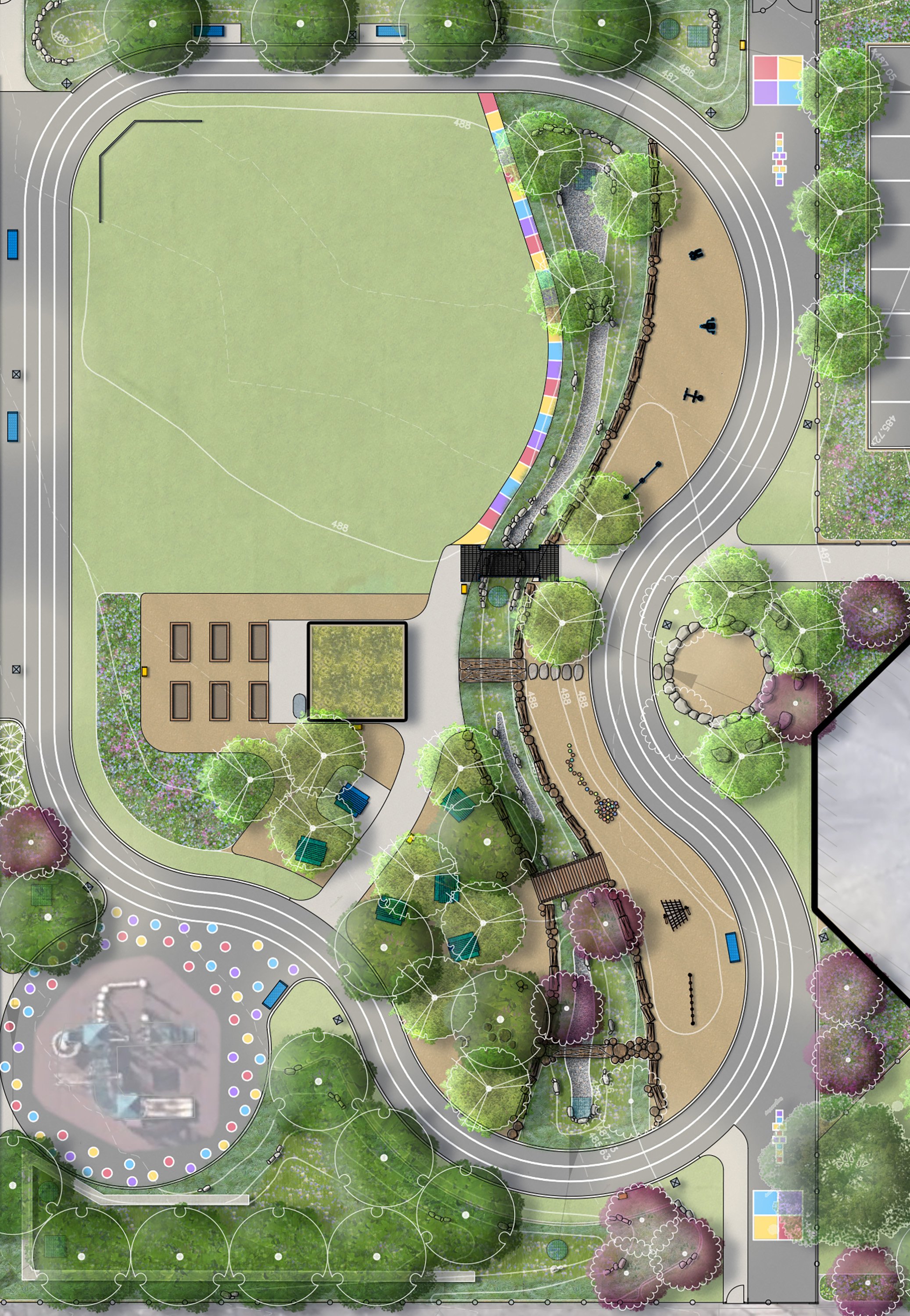
St. Louis Public Schools Green Schoolyard
St. Louis, Missouri
The Froebel Literacy Academy Green Schoolyard redevelopment will serve as a pilot project for St. Louis Public Schools as part of their ongoing Green Schoolyard Project. The project is a collaboration with The Nature Conservancy, the Missouri Department of Conservation, Dutchtown South Community Corporation, and other community partners.
The reimagined schoolyard will improve students’ well-being and play space while providing learning opportunities, and contributing to the ecological health and resilience of the community. The plan will transform the asphalt schoolyard into a green space through community engagement and participatory planning.
The school’s history of flooding makes on-site stormwater management a top priority. Rain gardens throughout the site will receive both surface and roof run-off. K-5 students will be greeted by a dry stream which connects the schoolyard’s three main zones: fitness, learning, and play. Encompassed by a meandering exercise track and backed by a community art wall are a turf recreation field and workout stations. New outdoor learning spaces consist of a shade structure with a green roof, outdoor classrooms, raised garden beds, and a picnic grove. The existing playground is enhanced by adjacent nature play. Funded by a MSD Project Clear Grant, green infrastructure improvements including native Missouri plant communities are represented throughout the schoolyard. The project also includes improvements to the Pre-K schoolyard, providing areas for vegetable and herb gardens, sensory gardens, and nature-based play.
DTLS continues to work with the Steering Committee, and has completed the investigation and validation phase which will culminate into a Concept Master Plan. The design team will work through MSD reviews and provide Bid Documents for construction.
Collaborators
Froebel Literacy Academy
Cordogan Clark & Associates
David Mason & Associates
MSD Project Clear Grant funding will allow for a 262% increase in permeable surface area, which will significantly reduce runoff while providing opportunities to learn about native plants and natural systems.






